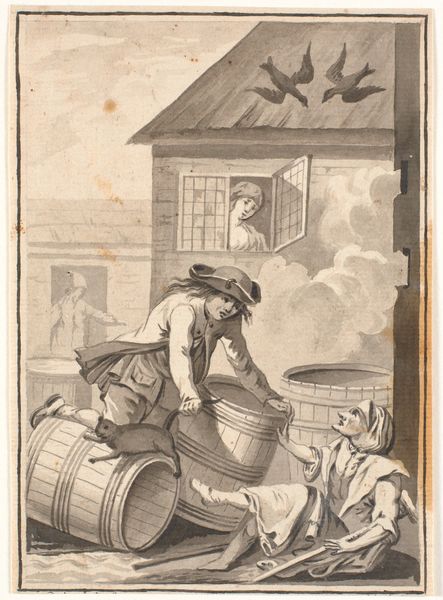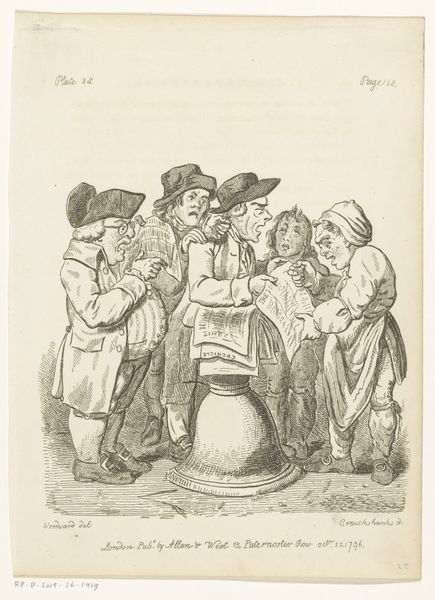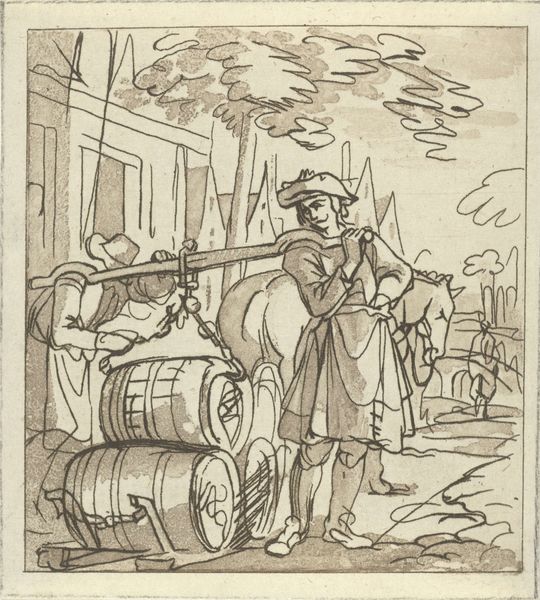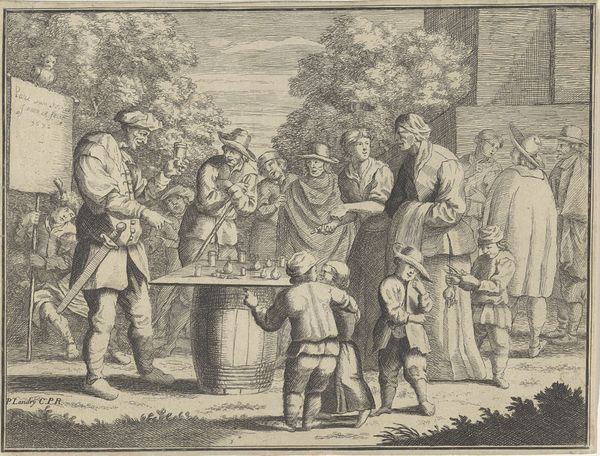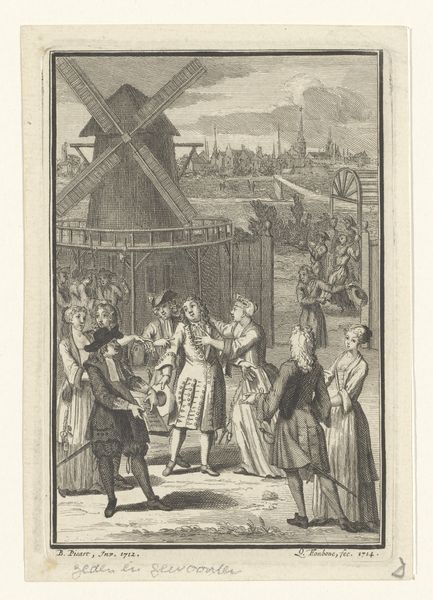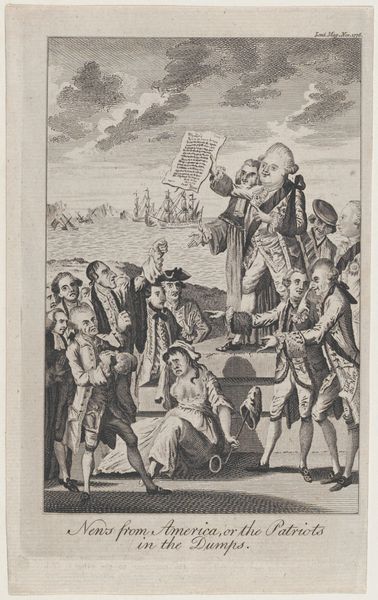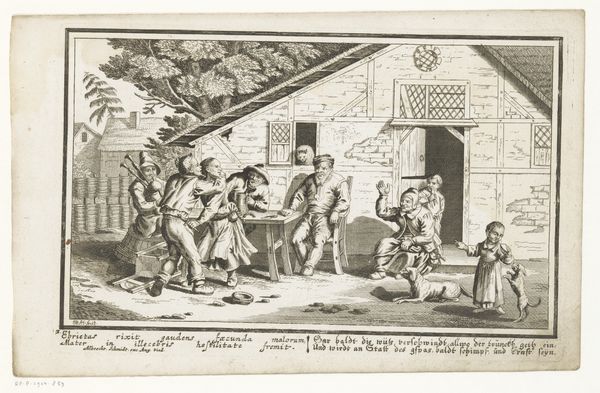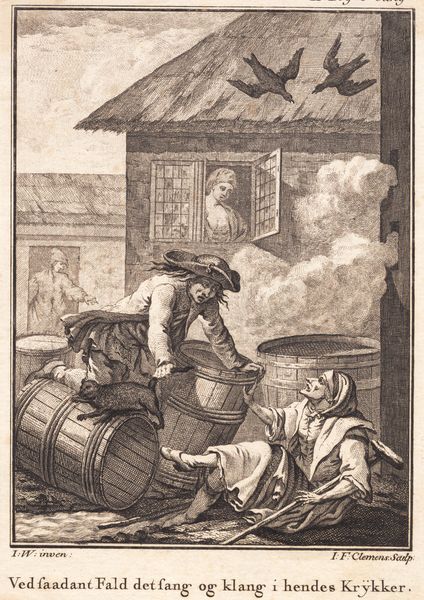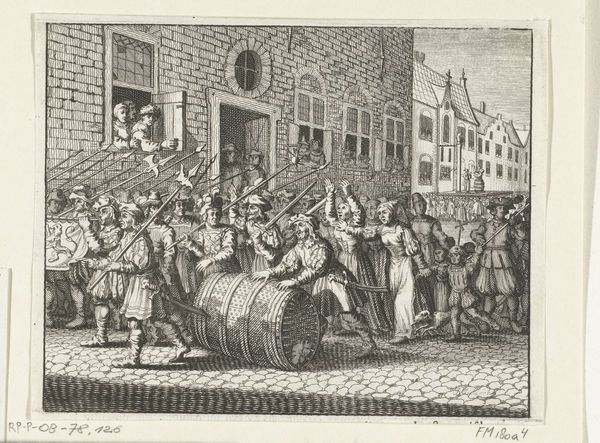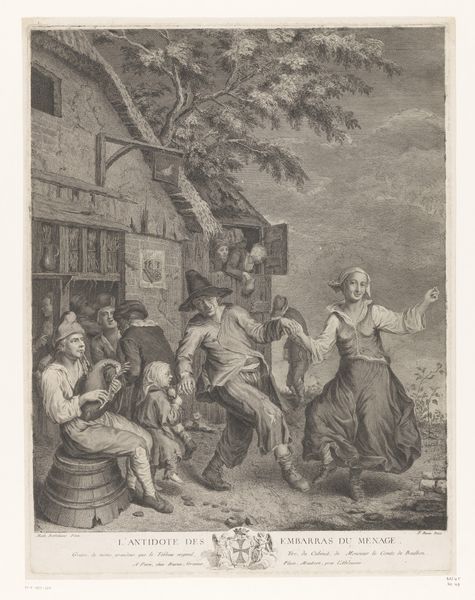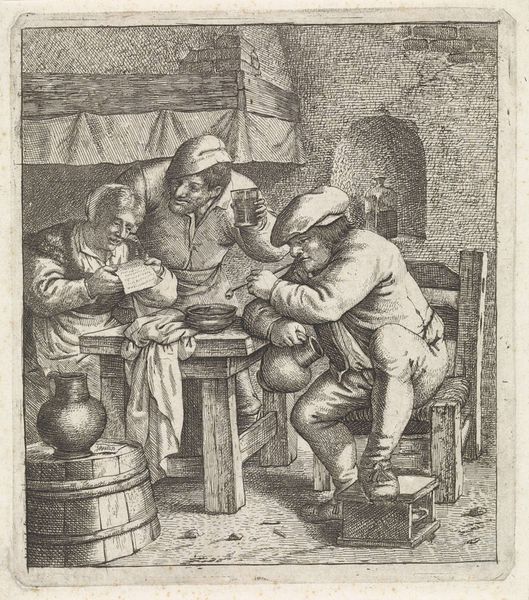
drawing, print, engraving
#
drawing
#
narrative-art
# print
#
caricature
#
portrait drawing
#
history-painting
#
engraving
Dimensions: plate: 14 x 10 in. (35.5 x 25.4 cm) sheet: 17 1/2 x 11 5/16 in. (44.5 x 28.7 cm)
Copyright: Public Domain
Curator: Welcome. Today we'll be examining Philip Dawe's "The Alternative of Williams-Burg," an engraving from 1775, housed here at the Metropolitan Museum of Art. Editor: What a striking image. The stark contrasts in shading create a really oppressive atmosphere. It feels charged with underlying tension and resentment, despite the rather small size. Curator: Indeed. Let's consider the context. This print likely circulated in response to the growing tensions leading to the American Revolution. Notice how Dawe, through the printmaking process itself, participated in and disseminated politically charged imagery. The lines etched into the metal plate were a means of broadcasting discontent. Editor: Absolutely. The composition is quite effective. You have this clear central focus on the signing, flanked by the crowd on the right and a bizarre tableau on the left—almost stage-like in its arrangement. The artist has created depth through precise line work and strategic use of chiaroscuro. The barrels themselves are an interesting focal point. Curator: Observe that one of the barrels has the inscription "For Joseph Wilks, Esqr, Lord Mayor of London." Consider the implications here: trade, colonial dependency, and the infrastructure required for distributing these materials all underscore the inherent link between commerce and the social order Dawe is criticizing. The very act of engraving allowed these ideas to be reproduced en masse, shaping public opinion through readily available imagery. Editor: Good point. Also note the noose hanging prominently on the right side. The shadow play casts it dramatically in our sightline as if it represents impending doom or punishment, the mood it projects cannot be denied by the visual signs displayed. There’s definitely a statement being made about power and resistance. The artist uses a number of cues here. Curator: These details are crucial for interpreting the historical and material forces at play. How it spoke to the colonial anxieties present and, by means of its tangible circulation, fanned those flames of independence. Editor: The balance in this image, between dark and light, symbol and message, shows off what can be achieved through relatively basic artistic skills. I now have a much clearer idea of the tensions shown here, than when I started out looking at this piece of work. Curator: Agreed. Analyzing the artist's hand and the very material nature of the print truly elucidates Dawe’s participation in the era's debates, providing insight into art and its influence in shaping social consciousness.
Comments
No comments
Be the first to comment and join the conversation on the ultimate creative platform.
